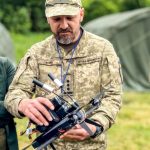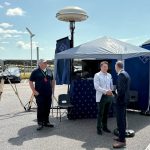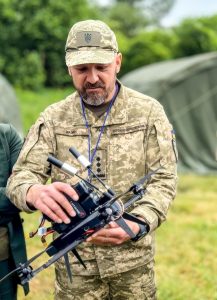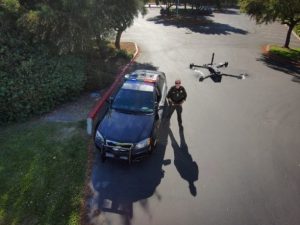U.S. Military Advances High-Altitude Optical Relay for Battlefield Power Distribution
Date: May 9, 2025
The Persistent Optical Wireless Energy Relay (POWER) project, in its second phase, aims to establish a simulated ground-air-ground relay link at White Sands Missile Range. This initiative seeks to enhance the capabilities of optical power-beaming relays to facilitate expeditionary energy transportation.
Based in Arlington, Virginia, the U.S. Defense Advanced Research Projects Agency (DARPA) plans to hold industry briefings on May 29, 2025, from 9 a.m. to 5 p.m. These sessions will provide detailed insights into the goals of the second phase of the POWER program before the program solicitation.
These meetings will take place at the DARPA Conference Center, securely conducted at the controlled unclassified information (CUI) level. Advance registration is mandatory for potential proposers.
POWER-BEAMING TECHNOLOGY
The POWER initiative aims to showcase an advanced power-beaming optical relay system that not only serves as a resilient alternative for energy transport but also enables both manned and unmanned aircraft to deliver on-demand power for various military operations. This prototype is designed to efficiently manage redirection, wavefront correction, and the harvesting of optical beam energy.
The ultimate implementation involves utilizing three airborne relay nodes mounted on existing aircraft to transmit energy from a ground-located laser source, effectively reaching altitudes of 60,000 feet and delivering electricity to ground receivers located 125 miles away.
In August 2023, RTX Raytheon secured a $10 million contract for the project’s initial phase, with the POWER Receiver Array Demonstration (PRAD) commencing in autumn 2024. The next phase will experiment with a simulated relay link at the White Sands Missile Range High Energy Laser Test Facility (HELSTF), New Mexico.
This effort aims to refine operational interfaces and validate that upcoming designs meet the overarching objectives of the POWER initiative. The demonstration will likely utilize a combination of commercially available components and advanced custom hardware.
ENVIRONMENTAL ADAPTABILITY
To address potential beam quality deterioration due to atmospheric disturbances, Raytheon is developing technology to correct the optical wavefront as necessary and harness energy from the optical beam to supply auxiliary power onboard.
The project aims to optimize energy generation, storage, and distribution for military applications while reducing dependency on conventional liquid fuels, thus enhancing operational efficiency and resilience during conflicts.
QUICKER RECONSTRUCTION OF ENERGY NETWORKS
Utilizing light-speed energy transport through a multifaceted system will facilitate swift adaptation during attacks, allowing the system to route energy through various paths within seconds to minutes, restoring full operational capability by replacing nodes in mere moments.
The POWER program aspires to deliver a total of 10 kilowatts of laser energy to the terminating ground node using a 50-kilowatt source that is transmitted via three airborne relay nodes with a diameter of less than one meter.
Industry representatives interested in attending the POWER phase 2 briefings are encouraged to register no later than May 21, 2025, at this link. For inquiries, please reach out to Paul Jaffe, the POWER program manager, at [email protected]. More information can be found at this page.













